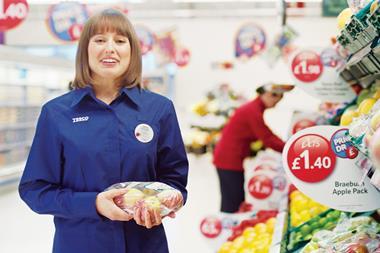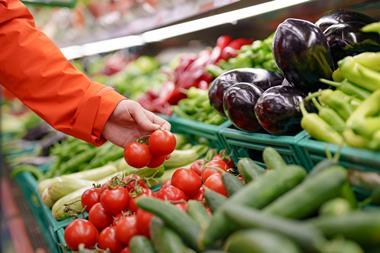The packet might say a dish serves two but 38% of people won't read it and another third won't believe it. Alex Black asks what's going wrong
When it comes to portion size recommendations, consumers aren't getting the message. A study by IGD released two weeks ago found that 38% of people ignore portion information on food packaging.
Even the ones who do read packs don't trust the information printed on them, it found. Just under a third said that if packaging suggested a product contained three portions, they would interpret that as meaning it probably only contained one or two.
The government and the food and drink industry have made a concerted effort in the past few years to get people to think about the amount of food they eat. So why aren't consumers taking note?
Rachel Hackett, IGD nutrition manager and author of the report, believes consumers don't look at portion sizes unless they want to ensure products contain enough food. "Even then they are reluctant to rely on guidance and will often buy another packet just in case," she says.
Most people do not look at portion size recommendations because it hasn't struck them as an issue unless they are on a weight loss programme, adds Dr Susan Jebb, head of nutrition and health research at MRC Human Nutrition Research. "Studies have proved people will say they feel full even if they eat different portion sizes of the same meal," Jebb says.
Industry efforts to improve portion size education has resulted in a plethora of on-pack information, which, the report implies, does little to aid clarity. As well as recommended portion size, products now feature traffic lights or GDAs and product weight often on different parts of the same packaging. The fact that FSA-endorsed traffic lights are based on 100g servings, which bear little or no relation to real servings, confuses consumers still further (which is one of the reasons we waged our Weigh it Up! campaign two years ago).
The statistics bear out the suspicion that rather than helping consumers, all this information often hinders their ability to make healthy decisions.
While 36% of consumers reacted well to advice such as 'This pack contains four servings' and another 15% agreed that suggested servings relative to the quantity in the pack helped (ie 'Suggested serving: ¼ of a pot''), 34% weren't interested in any serving suggestions whatsoever on the pack.
Indeed, IGD identified eight different types of information on food packaging, which claimed to help consumers decide how much to eat. Yet, when asked how they weigh up whether a portion contains enough food, 48% say they go on past experience, while almost one in five believe nutritional information is provided simply to make the product look healthier than it is.
The government continues to take a prescriptive approach to the issue of portion control. The Food Standards Agency on Tuesday launched a consultation on saturated fat and sugar reduction and portion size availability. One of the key recommendations is for chocolate countlines and blocks to be downsized, by up to 10% in some cases, by 2012 . Jebb agrees something as small as a 5% drop in the size of a high energy food is unlikely to be noticed by the consumer, but will make a huge difference to their intake of salt, fats and sugar.
Stephen Airey, the FSA's head of saturated fat and energy intake programme, explains that a range of smaller sizes and clear pack information will help consumers choose a healthy sized portion.
But Jebb believes sanctions against manufacturers alone will not make consumers manage their food intake. "Better labelling is a step in the right direction, but the issue of portion sizes has to be tackled holistically," she says. "It is naïve to imagine a portion size in 8 point font will revolutionise the way people eat. It has to be intuitive, and that is not going to happen overnight."
Sign in to comment on this article
Not logged in before? Register for FREE guest access today.
You will be able to:
- Read more stories
- Receive daily newsletters
- Comment on stories
Advert


















No comments yet